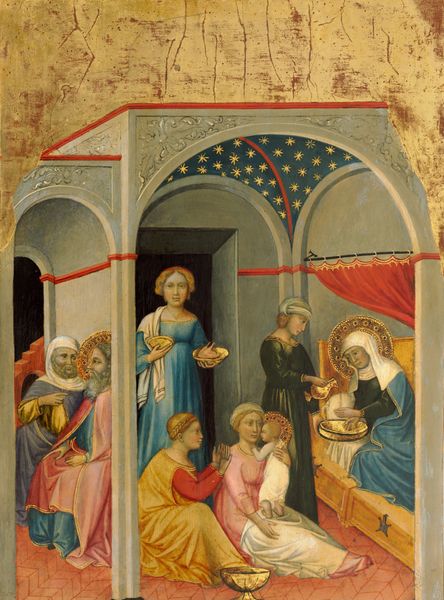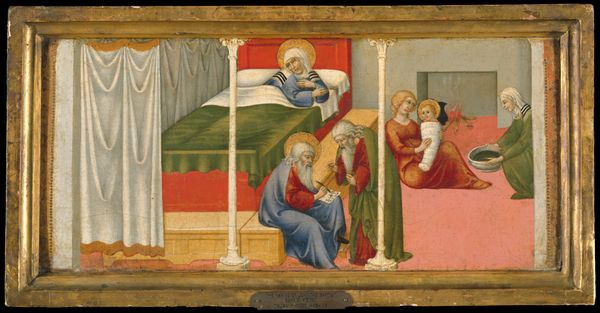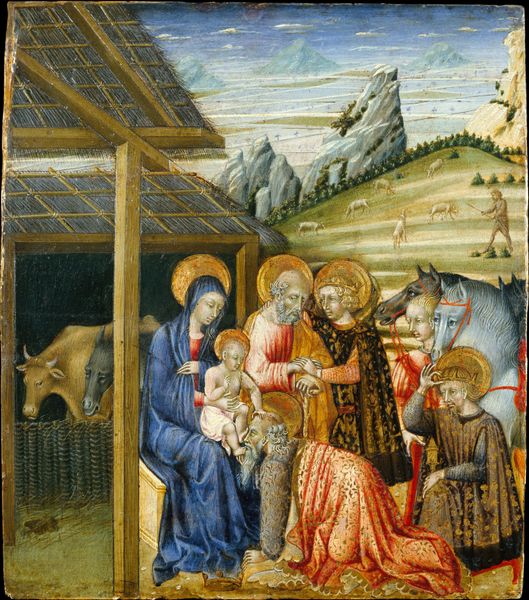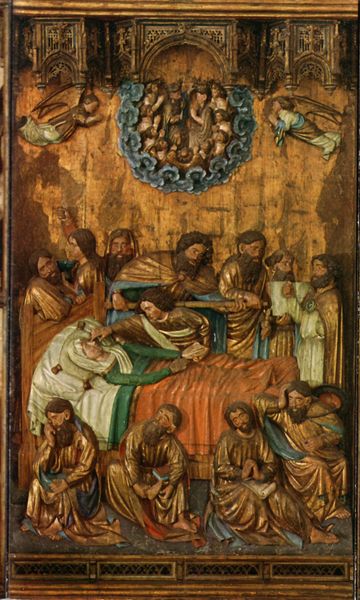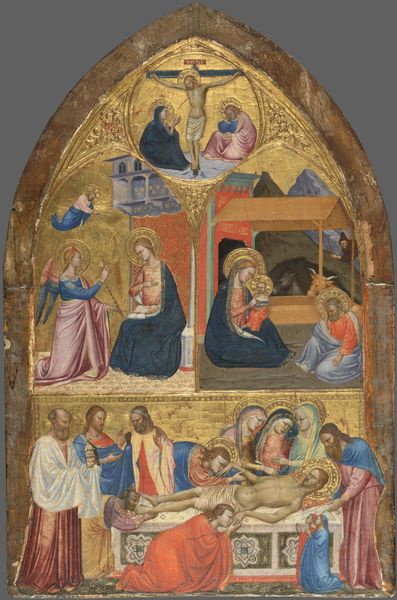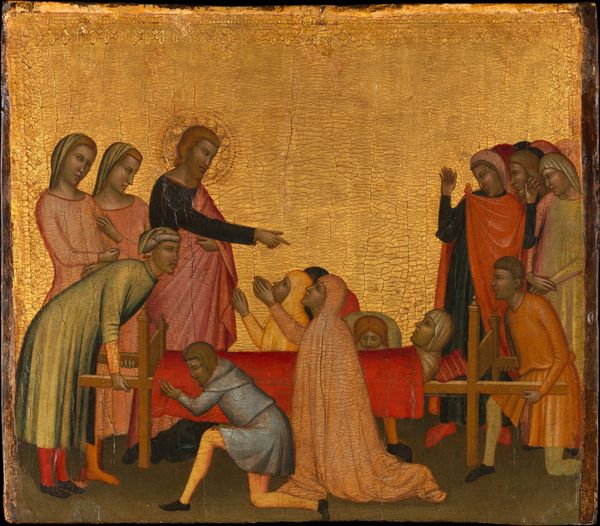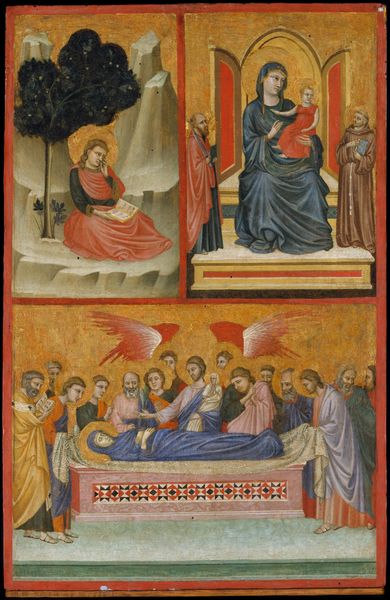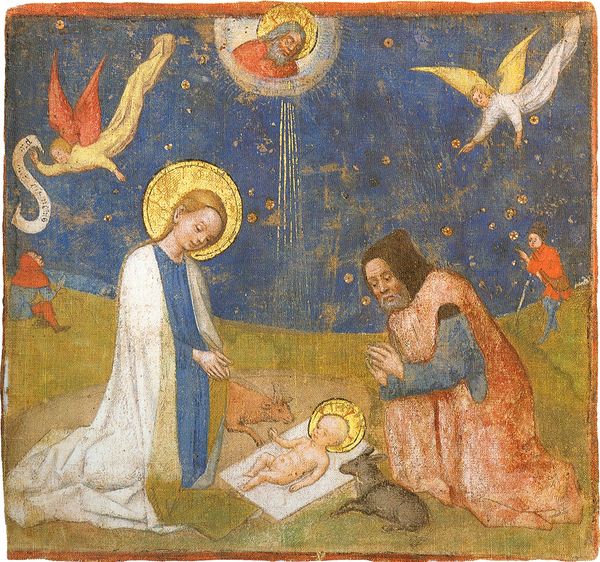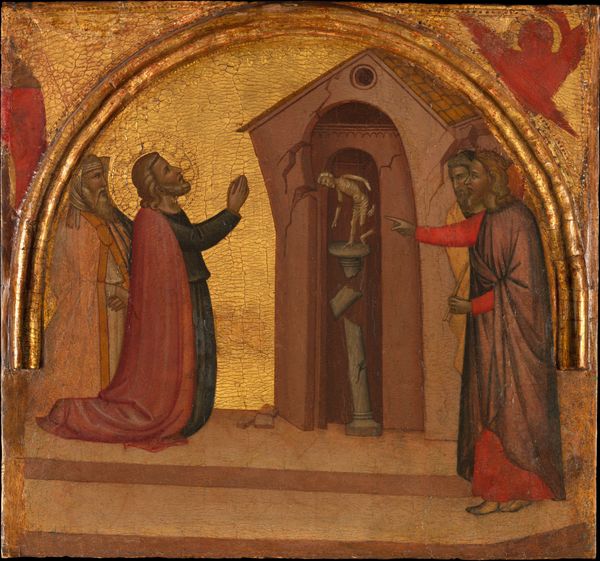
Saint John the Evangelist Raises Drusiana 1457 - 1463
0:00
0:00
tempera, painting, fresco
#
narrative-art
#
tempera
#
painting
#
fresco
#
oil painting
#
men
#
history-painting
#
italian-renaissance
Dimensions: Overall: 9 3/8 × 8 7/8 in. (23.8 × 22.5 cm)
Copyright: Public Domain
Curator: Giovanni di Paolo's tempera on wood panel, "Saint John the Evangelist Raises Drusiana," created sometime between 1457 and 1463, depicts a pivotal scene with remarkable restraint. Editor: My first impression is the somber atmosphere. Despite the implied miracle, there's a tangible weight to the colors and the figures' postures. It's more solemn than celebratory, even. You can almost feel the weight of death hanging in the room through the painting. Curator: Indeed. Di Paolo was working during a period deeply shaped by religious dogma and social hierarchies. This panel isn't simply about a miraculous event; it’s about the assertion of spiritual authority within a specific socio-political landscape. The very act of raising Drusiana reinforces the power of the church and, by extension, its doctrines regarding life, death, and resurrection, reflecting gender roles by showing that the raising of a woman is dependent on the religious leader and her devotion. Editor: Let’s consider the materiality. The use of tempera gives it a flat, almost otherworldly quality. The application feels so intentional; he really wants you to feel the presence and divinity of Saint John. How do the materials here speak to class and consumption? Was this art accessible or reserved for the elite? Curator: Good question. Italian Renaissance painting such as this relied on skilled labor: preparing the wood panel, mixing pigments, and gilding, so paintings would have been available for wealthy patrons or for display in religious institutions with the funding to make the purchase, which in turn enforced the religious and political power structure. The symbolic value here then ties directly into its economic value and how it would be displayed for consumption by religious and secular viewers, reinforcing ideas of authority. Editor: And look at the details in the robes and Drusiana’s bed covering! Someone painstakingly applied that detail. Curator: Exactly. It is also a narrative about the potential to destabilize social structures as well as endorse the norm because of course resurrection offers hope that transcends mortal concerns. Editor: So we see it not just as a testament to religious belief, but also an intricate object—reflecting the values of labor and craft of the Italian Renaissance. Curator: I appreciate how examining this panel reveals both its historical context and the material realities that shaped its creation. Understanding them can open our viewers to contemporary thinking. Editor: And for me, recognizing the materiality encourages dialogue with how craftsmanship affects its meaning, inviting an evaluation of historical production in connection with current makers and viewers.
Comments
No comments
Be the first to comment and join the conversation on the ultimate creative platform.
